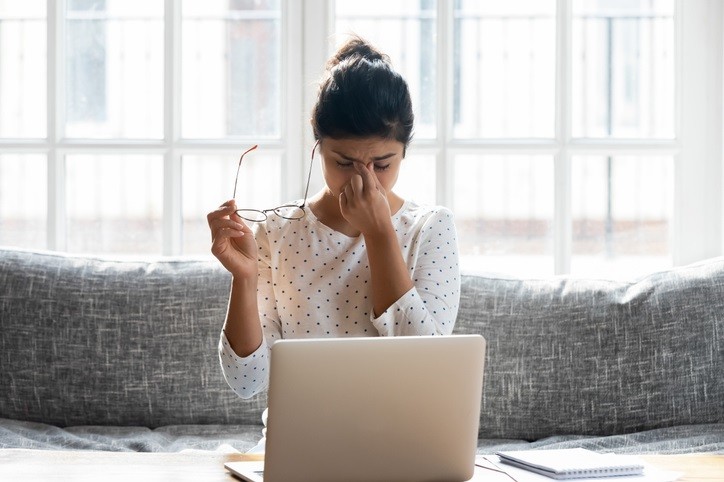The Brain Injury Association of America estimates that 1.4 million people sustain a brain injury every year in the United States. The brain runs the show and controls everything we do. A person’s ability to think, hear, see, feel, and much more is controlled by the brain. One of the most common symptoms following a traumatic brain injury is an intense intolerance to light, also known as photophobia or photosensitivity. Photophobia is often a lingering side-effect of post-concussion syndrome and can occur immediately after a traumatic brain injury. Even a mild traumatic brain injury can cause sensitivity to light and can linger for days to months. The Eason & Tambornini brain injury attorneys understand how debilitating the side effects of brain injuries can be, and we are here to help.
Learn more about our Sacramento Brain Injury Attorney Services.
How do you know if you are experiencing photophobia after a traumatic brain injury?
 Photophobia contributes to post-traumatic headaches, which are often debilitating for traumatic brain injury sufferers. People living with photophobia usually become dizzy and experience a general feeling of malaise when overwhelmed with visual stimuli. Nausea is also another common symptom of photophobia. The effects of photophobia often severely interfere with work performance. Daily activities such as looking at a computer can become next to impossible.
Photophobia contributes to post-traumatic headaches, which are often debilitating for traumatic brain injury sufferers. People living with photophobia usually become dizzy and experience a general feeling of malaise when overwhelmed with visual stimuli. Nausea is also another common symptom of photophobia. The effects of photophobia often severely interfere with work performance. Daily activities such as looking at a computer can become next to impossible.
What causes photophobia after a traumatic brain injury?
Light sensitivity is the most common vision-related symptom of people with traumatic brain injuries, and many experts believe that more than 50% of people with post-concussion syndrome have some visual disorder as well. A traumatic brain injury is most often the cause of photophobia. Photophobia usually occurs from damage to the portion of the brain known as the thalamus. The thalamus works to filter visual signals and sends those signals to other parts of the brain. If damage occurs to the thalamus, it cannot filter visual signals, thus causing visual overload.
Are there treatments for photophobia after a traumatic brain injury?
There are many ways to ease photosensitivity, but no specific treatment will cure you. Often, photophobia goes away on its own after a few weeks, but usually, it can linger for months with no relief. If you suffer from any vision-related symptoms following a concussion or brain injury, then we recommend finding a Neuro-Optometrist, as they help patients rehabilitate their vision. Physical therapy and cognitive therapy also help with the effects of photosensitivity. Limiting your screen time or wearing glasses that filter blue light while looking at a screen can also help ease photosensitivity and headaches following a brain injury. Colored lenses can also help you manage symptoms as they reduce the amount of visual input coming to your brain. The use of colored lenses or sunglasses to help with the effects of photosensitivity is excellent in the short term, but it’s recommended that you wean off use to make a full recovery. Lastly, making sure you get adequate rest following a brain injury can help alleviate photosensitivity along with other brain injury symptoms.
What can you do?
Many attorneys state to handle brain injuries, but in reality, they do not understand the complex and evolving nature of brain injury claims. The Eason & Tambornini Sacramento brain injury attorneys have represented hundreds of clients with brain injuries. If you or someone you love has suffered a brain injury and is experiencing photophobia, we hope you will consider contacting one of our Eason & Tambornini brain injury attorneys.
The information provided on this blog is for informational purposes only and not a substitute for professional medical advice, diagnosis, or treatment. Always seek the advice of your physician or other qualified health provider with any questions you may have regarding a medical condition. Never disregard professional medical advice or delay in seeking it because of something you have read on this blog.
